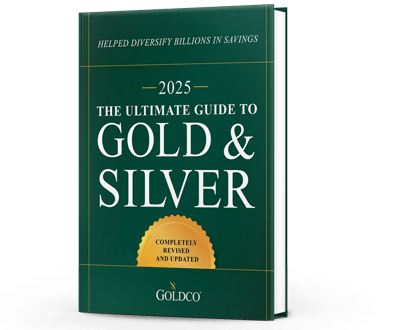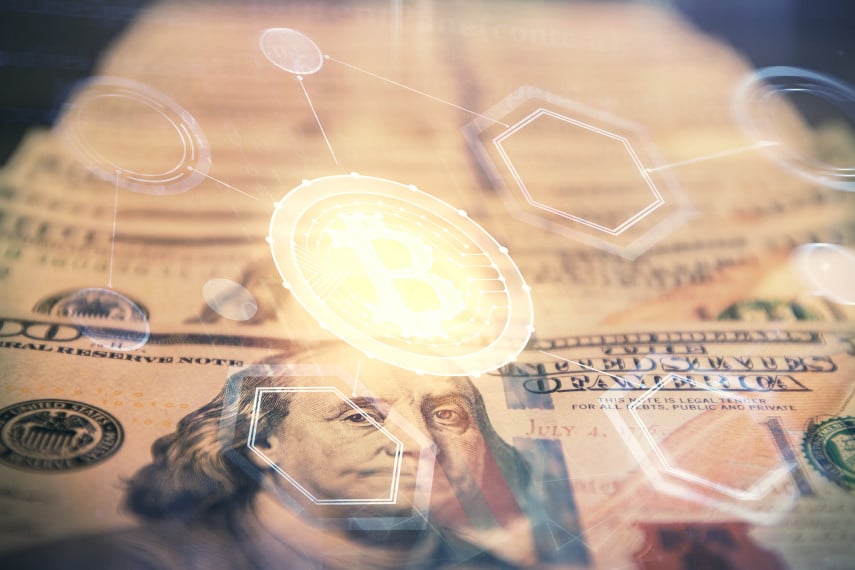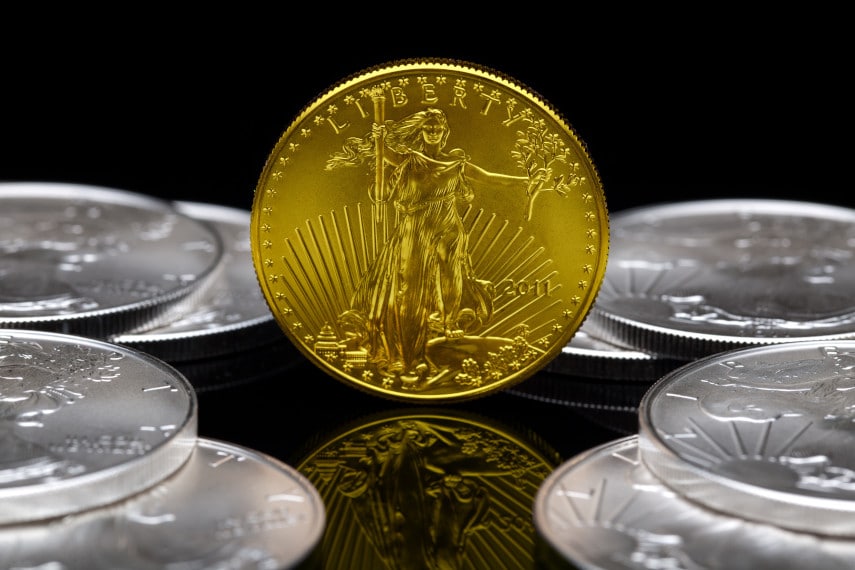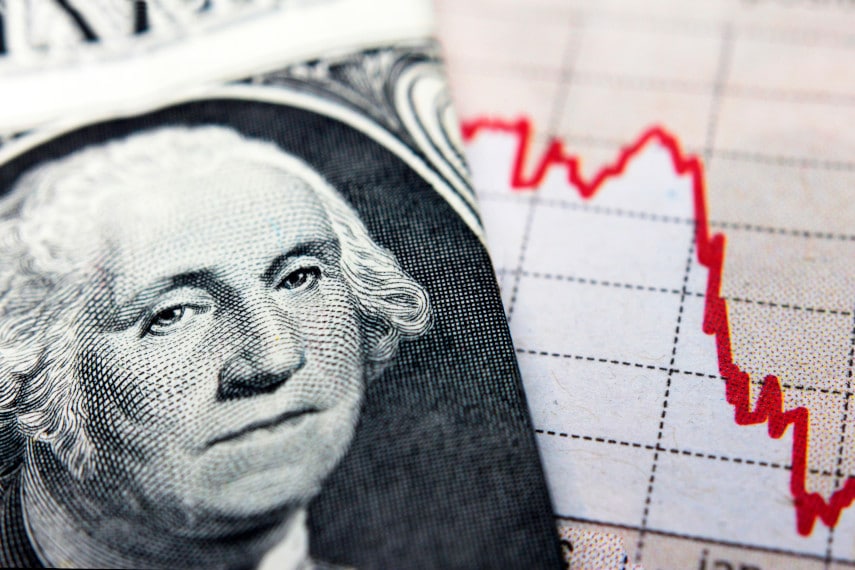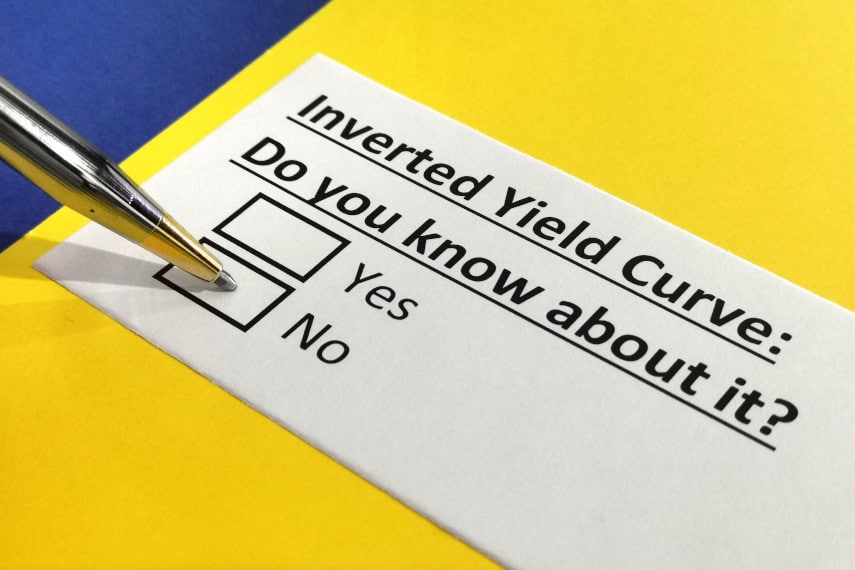
Maybe you’ve been watching inflation slowly creep up month after month. Maybe you’ve watched as your grocery bill climbs week after week. Maybe you’ve wondered how much longer you can afford to watch all of your expenses rising and eating more and more out of your monthly income. When will this all end?
That question is on many people’s minds. As inflation rises ever further, and more and more economic indicators seem to point to a coming recession, many people are hoping that such an event might finally put an end to prices that seem to be threatening to spiral out of control.
After all, it was the recession of the early 1980s under Paul Volcker’s tenure as Fed Chairman that was widely deemed to be responsible for ending the inflation crisis that had resulted in inflation rising as high as 14%. But how likely is a recession to happen today?
The Sign Everyone Has Been Waiting For
If you’re not familiar with the yield curve already, you need to start thinking about it. The yield curve is the graphical representation of interest rate yields of US Treasury securities with maturities between 4 weeks and 30 years. Normally that curve is parabolic, relatively close to the x-axis as it starts at the y-axis, and growing higher as it moves further from the y-axis.
That’s what you would expect to see, as longer-dated Treasury securities should have higher interest rates than shorter-dated Treasury securities due to the increased risk of longer-term investments. Occasionally, however, that curve inverts, with shorter-dated Treasury securities bringing higher interest rates than longer-dated securities. And that’s an almost guaranteed sign that a recession is coming.
What analysts most often look at is interest rate spreads when determining whether an interest rate inversion is relevant or not. And the most commonly looked at spread is the spread between 2-year and 10-year Treasury bonds. When that spread turns negative, it almost always means that a recession is on the way.
Yield curves can invert for a number of reasons. Very often it’s because investors become pessimistic about short-term economic conditions, and thus they look to buy long-term bonds in order to achieve some sort of safety for the long term. It can also mean that investors foresee the potential for interest rate cuts in the medium term, and thus they want to lock in long-term higher interest rates.
Whatever the reasons for the inverted yield curve, there’s no denying that an inverted yield curve is a sign of investor pessimism about the future. The fact that yield curves invert is a sign that investors are becoming fearful, and eventually their fears will become reality.
The last time the 2-year/10-year spread turned negative was in 2019, and according to Treasury’s yield curve data, that spread remained negative for much of the year. And if you’ll remember, late 2019 began to see some very strange happenings in overnight funding markets, things that portended a severe recession on the horizon.
We never got to see what would have transpired, however, as COVID came on the scene, lockdowns were instituted, and a severe recession was forced upon the economy. In a way that took a bit of steam out of the bubble. But the reaction to that recession, in the form of massive amounts of fiscal and monetary stimulus, ended up blowing that bubble back up again and has left us once again on the verge of another recession.
The 2-year/10-year yield curve just inverted again a few days ago, an ominous sign that recession is highly likely within the next few months. It just confirms what many of already suspected, that the economy is incredibly weak and is likely to fall into recession in the near future.
Factors Leading to Recession
There are three primary factors pointing to a high likelihood of a recession. They are:
- High Inflation
- The Everything Bubble
- Quantitative Tightening
Inflation
We’ve all seen the effects of inflation, at the grocery store, at the gas station, and when we’re purchasing appliances or cars. Everything is going up in price, and in many cases faster than we can even react to. With the Federal Reserve having added over $5 trillion to the financial system since 2020, that inflation is showing no signs of slowing down anytime soon, which means we could be in store for even more significant price increases in the future.
Everything Bubble
Some observers have joked about the “everything bubble” for a few years now. They’ve pointed out that the prices of many assets are at historically high levels that are likely to be unsustainable. That’s especially true for stock markets, which are arguably more overvalued than they ever have been.
But as inflation runs through the economy, the prices of just about everything are increasing. These price increases will ultimately be unsustainable, as consumers aren’t seeing wage and salary increases large enough to enable them to continue spending at such levels. And so eventually the bubbles we’ve been seeing across numerous asset classes will eventually pop.
Quantitative Tightening
Quantitative easing has been the name of the game for the Federal Reserve ever since the 2008 financial crisis. But that is all starting to come to an end now that the Fed is ending its asset purchases, raising interest rates, and talking about shrinking the size of its balance sheet.
Of course, even so-called “normalization” could mean a balance sheet of $6 trillion, something significantly larger than the Fed’s balance sheet has ever been. But to get there, the Fed will have to pull liquidity out of the system, something which is all but guaranteed to trigger a recession.
Markets may pitch a fit and demand that the Fed return to monetary easing, but the Fed is likely nervous that it has eased too much already. Right now the name of the game is taming inflation, and it looks as though the Fed is prepared to tolerate, or even cause, a recession in order to get inflation back under control.
Protect Your Wealth Against the Crash
With a stock market crash and recession likely around the corner now that the Fed has backed off the gas and the yield curve has inverted, it’s only a matter of time before a recession occurs. Now is the time to act and make sure that your assets remain secure no matter how bad the next recession is.
Many Americans have already made the move to protect themselves and their savings with gold and silver. Through a gold IRA or silver IRA, they are able to protect their retirement savings with investments in physical gold and silver coins or bars.
A gold IRA or silver IRA gives you the same tax advantages as any other IRA account, and you can fund your precious metals IRA with a rollover or transfer from an existing 401(k), IRA, TSP, or similar retirement account tax-free. And when it comes time to take a distribution, you can take that distribution either in cash or in gold and silver.
The last time crisis hit, in 2008, gold and silver went up sharply in price in its aftermath, with gold nearly tripling in price and silver more than quintupling in price. And the last time we had high and persistent inflation, in the 1970s, both gold and silver saw annualized gains of over 30% for the decade.
That’s the kind of performance gold and silver could offer in the future once the next crisis occurs. And that’s why time is of the essence when it comes to protecting your assets.
Don’t wait any longer to protect your retirement savings. Call the experts at Goldco today to get on the path to safeguarding your future with gold and silver.

